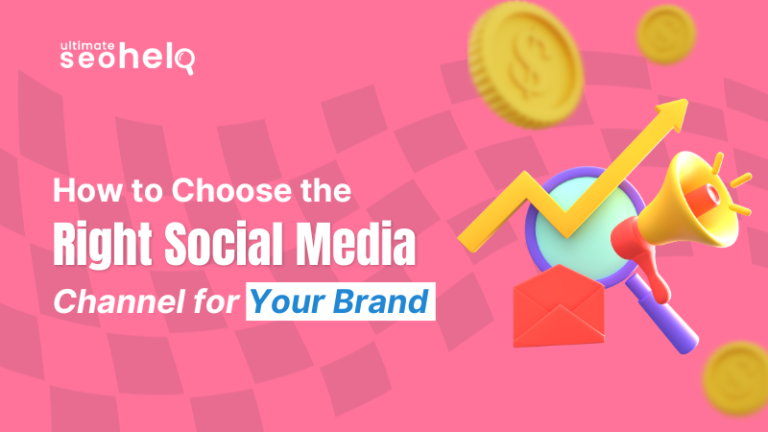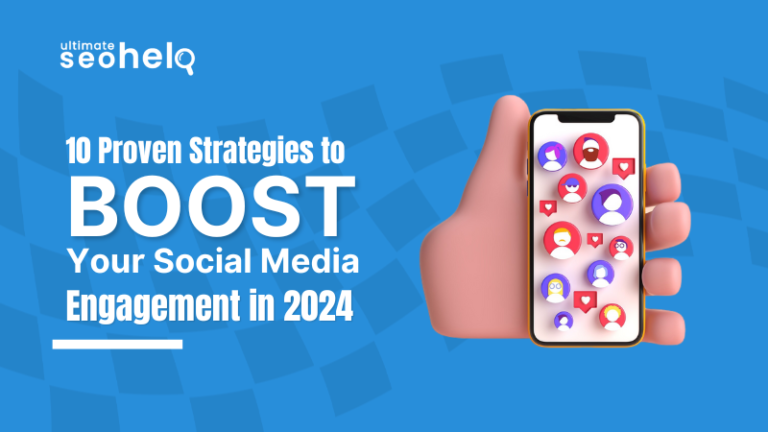In today’s digital age, having a solid social media presence is crucial for any brand. But with so many platforms available, how do you know which is right for your business? In this blog post, we will discuss different factors you must consider before selecting the preferred social media channel for your brands.
Top Factors to Consider Before Choosing a Social Media Channel
Before choosing any social media platform, you must consider factors like your business objective, the type of content your targeted audience uses frequently, and the strategies your competitors are using. Let’s discuss the top factors that will help you choose the right social media platform:
-
Define Your Business Objectives
Specific objectives must be set online for a brand to engage in social media. Whether – Do you want your brand to be more recognized, want more people to visit your website, look for new clients, or increase customer interaction? Each channel has benefits, meaning managing your goals and the selected platform is the key to success.
For instance, if you have more graphic products, then Instagram or Pinterest can be suitable. LinkedIn may be the best place to find information about careers. By defining your goals and objectives, you can create content and post it on only that platform where you can get potential leads.
-
Know Your Target Audience
The choice of the platform should depend on the audience’s understanding of who will be using the platform most often. Some aspects that may be considered include age, gender, location, interests, and overall online conduct.
People of different ages use different platforms. TikTok is more popular among Gen Z people, while FB is more universal. Identify and focus on the social media networks your viewers frequently use. Also, consider how your audience engages in these platforms regarding your chosen topics. Are they more likely to engage with a video or text format, or do they like pictures more? Are they more active at some hours within a particular day? Thus, knowing the audience and the general tendency of their actions and interests, it will be possible to create content that would be interesting for the target audience and to choose the right platforms for posting.
-
Post Content Which Resonates with Platform
Different social media channels are distinct in their nature and the type of content they promote. Therefore, it is critical to design content that fits the platform and what the users expect to find to achieve the goals and objectives laid out. For instance, Instagram is about beautiful pictures and short videos, while Twitter is famous for short texts and real-time activity. LinkedIn users expect content related to their field, while TikTok users would like to watch short and funny videos.
Your content should suit the platform in question’s capability and purpose. This could entail making vertical videos for Instagram stories, writing Twitter threads, or writing LinkedIn articles. In this way, you could post the specific content that would fit each platform and deepen the connection with the audience.
-
Know Your Competitors
Understanding your competitors’ social media usage can help develop your use of these platforms. Find out which niches they are mostly posting about and analyze their activity’s content, frequency, and intensity. It is crucial not to replicate the competitors’ actions, but analyzing them can be pretty valuable for defining the distinct ways to stand out from the crowd.
Also, to learn from others’ best practices and avoid mistakes, analyzing competitors and their content, possible formats, hashtags, and ways of engaging the audience in your industry is helpful. Apply it to enhance the use of social media engagement and promote your business to stand out in your area of specialization.
Conclusion
Selecting social media platforms to use by your brand requires you to consider factors such as business goals, your target market, the content you plan to post, and the competition. Thus, one can make an effective social media strategy by defining objectives, identifying your audience’s preferences, creating content specific to the platform, and observing competitors.


